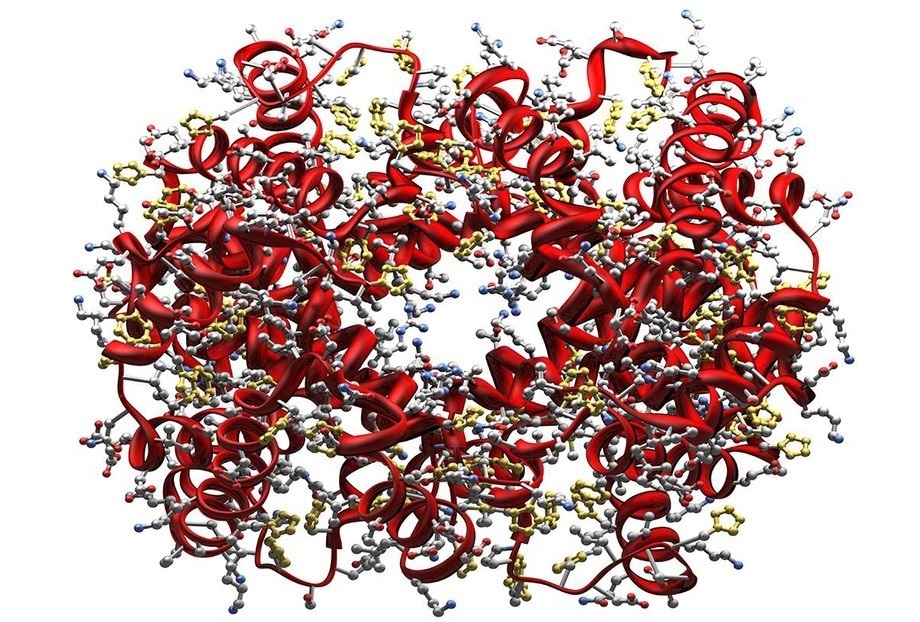Respiration is essentially a rudimentary process that occurs in all living things, enabling them to create energy, remain healthy, and live.

Hemoglobin. Image Credit: iStock photos/theasis.
Within the cells, respiration involves the so-called “respiratory proteins,” for example, myoglobin in muscles and hemoglobin in the blood.
Respiratory proteins function by attaching and discharging tiny molecules, including carbon monoxide, oxygen, etc., known as ligands. They perform this activity via their “active center,” which, in several respiratory proteins, is a chemical structure known as heme porphyrin.
When small molecules are attached and released, it causes modifications in the molecular and electronic structure of the heme. Such modifications indicate the transition from a domed high spin un-ligated form to a planar low spin ligated porphyrin form, and the other way around.
This change is a major step for respiration, eventually swapping hemoglobin between a “tense” and “relaxed” conformation.
Electrons not only revolve around atoms but also revolve around themselves. They can also cross over from one spin state to another.
The discussion regarding the shift from low-spin planar to a high-spin domed heme has been governed by two schools of thought—the procedure is performed either by a cascade among electron spins states or by thermal relaxation.
A research team, headed by Majed Chergui from the School of Basic Sciences at Ecole Polytechnique Fédérale de Lausanne (EPFL) has now successfully resolved this debate. By using short and energizing laser pulses, the researchers separated the tiny molecule from the heme. They subsequently utilized another short, hard X-ray pulse from an X-ray free-electron laser to promote X-ray emission (XES), a highly sensitive fingerprint of the molecular spin state, which tracked the changes in the heme as a function of time.
Thus, the team was able to establish that the passage from planar to domed heme and back is induced by a cascade among the electron spin states.
The research work was performed on nitrosyl-myoglobin, a kind of myoglobin containing a bound nitric oxide molecule. Nitrosyl-myoglobin has a major role to play in the regulation of vasodilatation, neurotransmission, immune responses, and platelet aggregation.
The conclusions of our work apply to all heme proteins. In particular to hemoglobin in its uptake and release of oxygen when we breathe. Although this takes place at the thermal temperatures of the body, breathing is governed by electronic changes in the heme.”
Majed Chergui, School of Basic Sciences, EPFL
Source:
Journal reference:
Kinschel, D., et al. (2020) Femtosecond X-ray emission study of the spin cross-over dynamics in haem proteins. Nature Communications. doi.org/10.1038/s41467-020-17923-w.